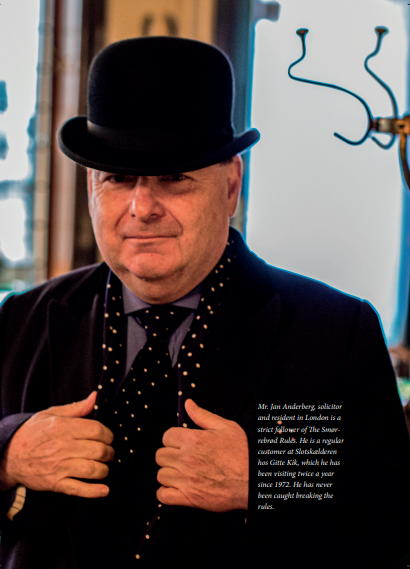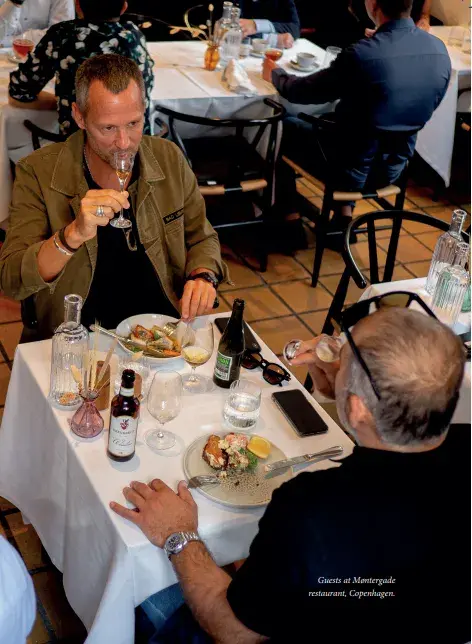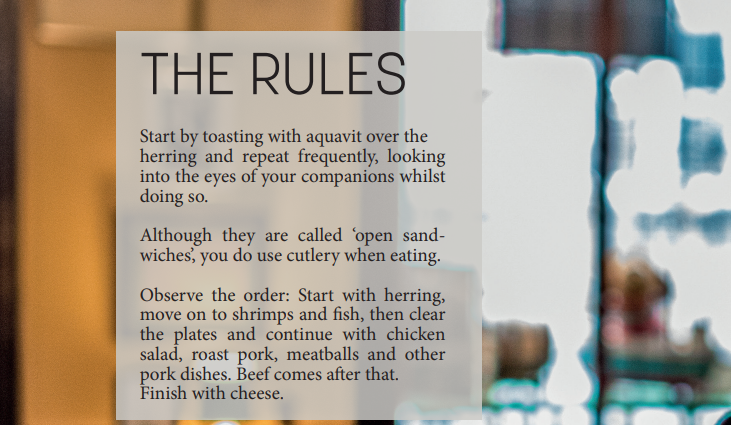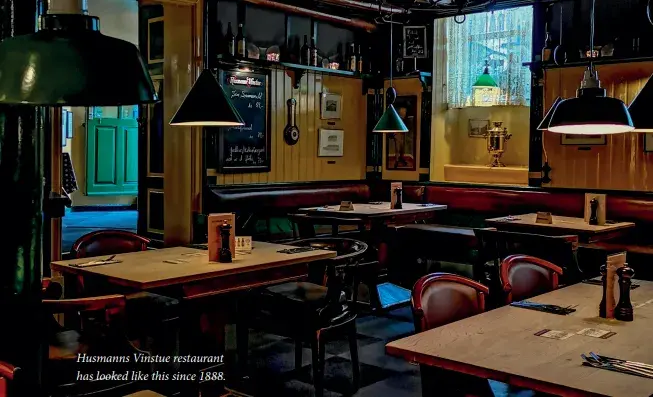Foreigners sometimes believe that smørrebrød is identical to the Swedish smorgasbord, but that is not the case.


Like the Swiss and Germans, Danes are quite fond of rules, and they make no exception for smørrebrød – which, by the way, is no ‘smorgasbord’.
Foreigners sometimes believe that smørrebrød is identical to the Swedish smorgasbord, and you may find smørrebrød dishes at a Swedish smorgasbord restaurant, but these are usually very simple versions of smørrebrød, and not the elaborate preparations Danes prefer.
Smørrebrød and smorgasbord have bread and butter in common. The name ‘smorgas’ (smörgås) is Swedish for ‘butter goose’. This comes from the small chunks of butter that would float to the top of the bucket when milk was being churned, looking like geese paddling the surface. These small ‘geese’ of butter would be collected and spread on the bread. But smørrebrød is not smorgasbord, which has become a catch-all term used to indicate any diverse group, synonymous with ‘a vast array of possible choices’.
Indeed, Danish smørrebrød culture involves hundreds of choices, but the original smorgasbord is a Swedish tradition from the 1500s and 1600s: a time when it became customary to serve aquavit with small appetizers of bread, herring, cheese, and sausage before sitting down for dinner. In the mid-17th century, smorgasbord became popular in its own right. No longer just an appetizer, it was now the main meal itself, and it spread all over the country as a popular buffet at railway stations.
Feel free to knock yourself out with smorgasbord in Sweden, eating whatever you want, whenever you want it. But be warned: the Danes may very well frown upon you if you break the rules of smørrebrød. These unwritten laws chiefly concern the succession of what to eat when. It is important to note that Danes use a knife and fork to eat smørrebrød, even though the word is often translated as ‘open sandwich’.
It is okay to use your hands if you are eating ‘håndmadder,’ the simple type of smørrebrød used in lunch packs for school or work. Smørrebrød eaten at a table, however, requires cutlery.
The traditional way to begin is with herring, and it usually comes in several variations. It is eaten on rye bread with butter or spiced pork fat (krydderfedt). In the old days, people would eat krydderfedt with many other toppings. Today, it is mostly eaten with herring, although a few die-hard fans demand krydderfedt with their extra-aged cheese.
My father, as a Dane, was raised on smørrebrød without ever having thought twice about what he was eating. He shared his passion with my brother and me – explaining the intricacies of which meat could be combined with which topping. I was perplexed by all the combinations, and struggled to remember them all. Some of the traditions seemed grounded in good sense – like the one that prohibits mixing pickled herring with liver pâté – but others caused frustration. It was inexplicable to me that ham and cheese were not to be eaten together according to smørrebrød protocol, but those were the rules, and Danes were sticklers for doing things the right way.
– Marcus Schioler, Canadian author of the blog danishsandwich.com
Starting with a fatty fish and butter or pork fat is contradictory to the normal ways of planning a menu of courses, which traditionally begin with light starters. But this is exactly why we drink aquavit: to clear the palate. Some of us also believe that aquavit aids digestion – or, at least, that gives us a reason to have another….
After the herring, it is time to savour other fruits of the sea like cold smoked salmon before moving on to shrimps and the very popular fried plaice. Having done away with seafood, the plate is changed and diners move on to chicken salad or directly to the star of Danish culinary traditions, the pork.
It comes in many types of sausages, especially rolled pork sausage (rullepølse), liver paté (leverpostej), meatballs (frikadeller) and, most importantly, the pork roast (flæskesteg). After pork comes roast beef and other red meat dishes, although beef tartare, because it is served raw, may also be eaten before or after the fish.
The last stop on the journey is cheese, and here the traditional type is an extra-aged firm cheese in the style of Dutch Limburger. This cheese is eaten with beef aspic, raw onions, and maybe a splash of rum, cognac, or cask-matured aquavit.

Another classic is breaded, deep-fried Camembert served with blackcurrant jam, a dish that used to be available in most inns, even the ones mostly specialised in serving drinks.
It was at a holiday table where, in the 21st century, I sat with my husband’s Danish family for the first time. I wanted to make a good impression and felt confident in my manners until I was confronted with the ritual of eating smorrebrod. Suddenly, I was catapulted into a world of unknown rules, stumbling through a minefield of herring, rye bread and schnapps. If there is a Danish equivalent for the phrase ‘faux pas,’ then I committed it. Not only did I place the smoked salmon on rye bread (it must be white bread), but I also used the same plate when I switched from the fish to the meat course. When I gratefully reached for my schnapps, I committed an even worse blunder: I drank without raising the glass first, looking everyone in the eye and saying skol. By smorrebrod standards, I was a cultural Neanderthal.
But once you get the hang of it, it’s difficult not to be enchanted by the simple pleasure of eating smorrebrod and the Danish culture that produced it. It’s hard not to admire a country that celebrates and expresses itself with fresh, artfully arranged sandwiches and a beer or schnapps. Toast frequently. Not only is this expected, but if you are a smorrebrod rookie, this will calm your nerves and ensure that your table companions will not be inclined to remember your gaffes. This is as close to ceremony as you will find in the easygoing Danish culture.
– Lynda Balslev, American cookbook writer married to a Dane
Not only are there rules about smørrebrød; the accompanying drinks are also regulated. The main drink for smørrebrød is beer. Historically, pilsner has been the most popular, and it has consistently travelled with a small partner: the aquavit. A classic through the centuries has been the clear, caraway-spiced aquavit, and it has customarily been enjoyed ice cold.
There is an old saying that ‘the herring must be able to swim’, and this is why the first toast with aquavit is made with the first bite of herring. From then on, it is simple: just keep toasting throughout the meal for as long as you can handle it. But don’t worry, because most Danes today have given up the exhaustive drinking pace that was common in earlier times.
But still, a beer and a couple of aquavits are helpful if you want the full experience of a traditional Danish lunch.






